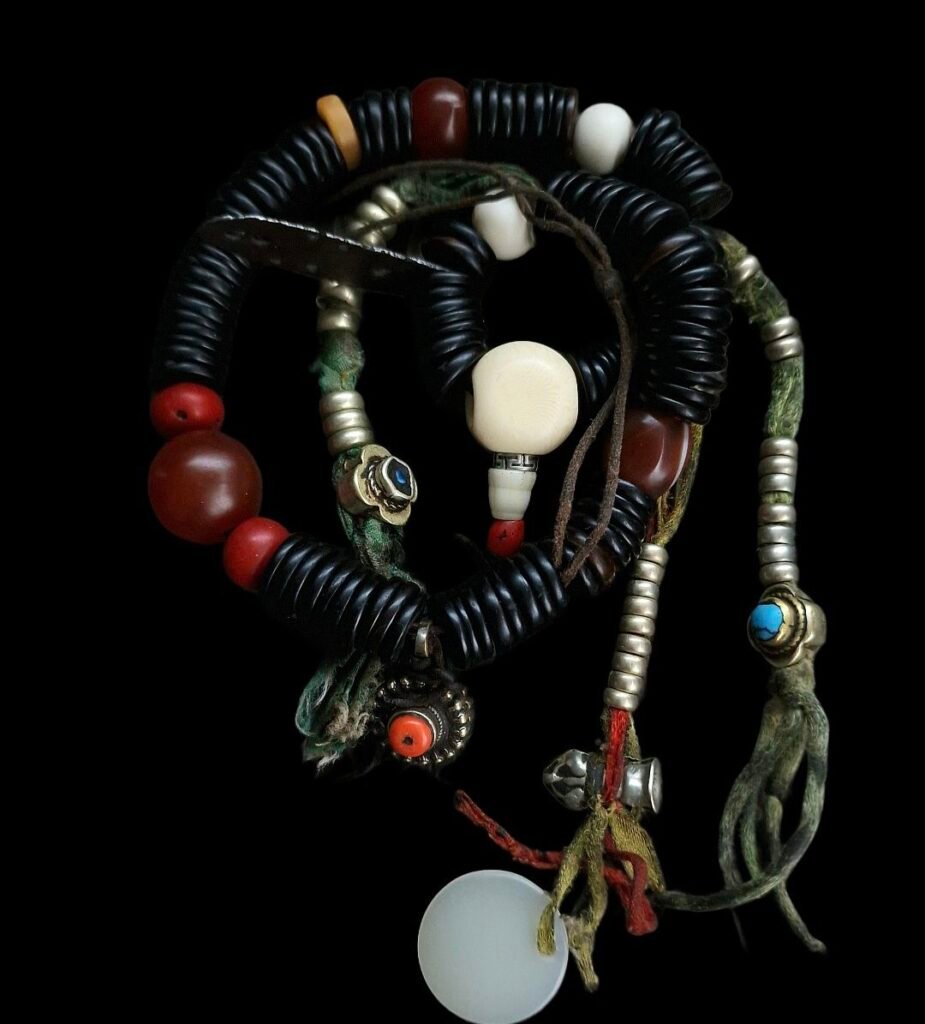Sacred Prayer Beads of Spiritual Practice: Tibetan Mala Beads (108)
Introduction
Tibetan Mala, also known as prayer beads, are essential tools in the spiritual practices of Buddhism and other Eastern traditions. Traditionally composed of 108 beads, these malas are used for counting mantras, prayers, or breaths during meditation and ritual practice. Beyond their practical use, Tibetan Malas carry deep symbolic meaning and are revered as sacred objects that guide practitioners on their path to enlightenment.
The Origins of Tibetan Mala
The practice of using prayer beads dates back thousands of years, originating in ancient India and the early traditions of Hinduism and Buddhism. The word “Mala” is Sanskrit for “garland,” highlighting its function as a tool to focus the mind and connect with the divine. As Buddhism spread across Asia, the use of Malas was adopted in Tibet, where they became an integral part of spiritual life.
In Tibetan Buddhism, a Mala is more than a counting device—it is a sacred object imbued with spiritual energy. Each bead represents a mantra or prayer, and reciting mantras while moving the beads is believed to accumulate merit, purify karma, and foster concentration. Over time, Malas evolved into symbols of a practitioner’s spiritual journey and devotion.
The Structure and Symbolism of Tibetan Mala
A traditional Tibetan Mala typically contains 108 beads, a number representing the 108 defilements or negative emotions one must overcome to reach enlightenment. Additional beads may include:
Counters or spacers: Mark points during mantra recitation
Guru bead: A larger bead symbolizing the teacher-student relationship and spiritual guidance
Materials and Their Spiritual Meaning
Tibetan Mala are crafted from carefully selected materials, each with symbolic and energetic significance:
Bodhi Seeds: Symbolize the Buddha’s enlightenment under the Bodhi tree. Bodhi Mala
Rudraksha Beads: Believed to protect against negative energies
Sandalwood: Offers a calming aroma, aiding meditation and inner peace
Bone or Yak Horn (Kapala): Reminds practitioners of impermanence and the cycle of life. Kapala beads
Tibetan Coral: Valued for vitality, grounding, and emotional balance. Tibetan Coral
Tibetan Turquoise: Believed to bring protection, healing, and spiritual clarity. Tibetan Turquoise
Each Mala is unique; its material, color, and design add layers of personal and spiritual significance. For instance, turquoise Malas are believed to bring protection and healing, while lotus seed Malas symbolize purity and spiritual growth.
Tibetan Mala in Practice
Malas are primarily used for mantra meditation, where repetitive recitation focuses the mind and cultivates spiritual virtues. The most common mantra, Om Mani Padme Hum, is associated with the bodhisattva of compassion, Avalokiteshvara.
Step-by-Step Use
Hold the Mala: Typically in the right hand, draped over the middle finger
Start Next to the Guru Bead: Move one bead per mantra repetition
Complete the 108 Beads: Upon reaching the guru bead, turn the Mala and continue in the opposite direction
Silent Meditation: After finishing, rest for a moment in mindfulness, absorbing the energy cultivated
Regular use is believed to enhance the Mala’s spiritual potency, making it a cherished object that may be passed down as a sacred heirloom.
Benefits of Using Tibetan Mala Beads
Enhanced Focus: The tactile movement helps keep the mind attentive
Emotional Balance: Materials like coral and turquoise provide grounding and protective energies
Spiritual Connection: Each bead is a step toward inner stillness and devotion
Mind-Body Harmony: The physical act of moving beads anchors meditation in the present moment
Conclusion
Tibetan Mala beads (108) are sacred tools of spiritual practice and symbols of deep connection to Buddhist teachings. Their rich history, symbolic meaning, and role in meditation make them indispensable for spiritual growth. Whether used in personal practice or worn as an emblem of devotion, Tibetan Malas continue to guide practitioners toward inner peace and enlightenment.
Related posts

Significance of Bodhi…

Kapala Mala Prayer Beads






I don’t think the title of your article matches the content lol. Just kidding, mainly because I had some doubts after reading the article.
Your point of view caught my eye and was very interesting. Thanks. I have a question for you.
Your point of view caught my eye and was very interesting. Thanks. I have a question for you.
Your article helped me a lot, is there any more related content? Thanks!
I don’t think the title of your article matches the content lol. Just kidding, mainly because I had some doubts after reading the article.
Thank you for your sharing. I am worried that I lack creative ideas. It is your article that makes me full of hope. Thank you. But, I have a question, can you help me?
Hi, how can i help you